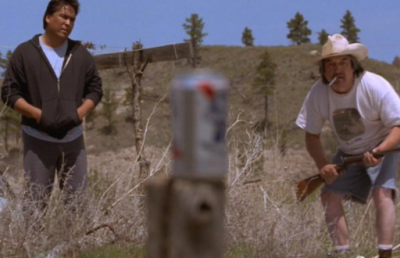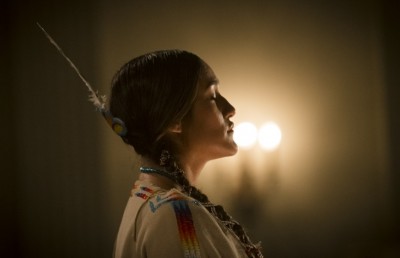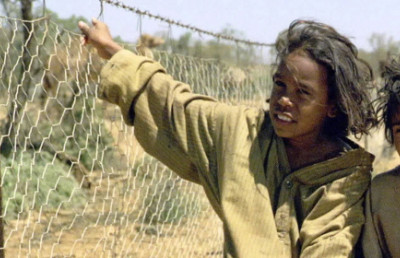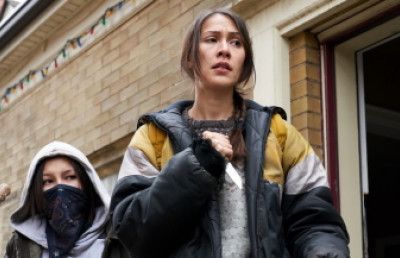Indian Horse: Hockey Night In (a not so benevolent) Canada
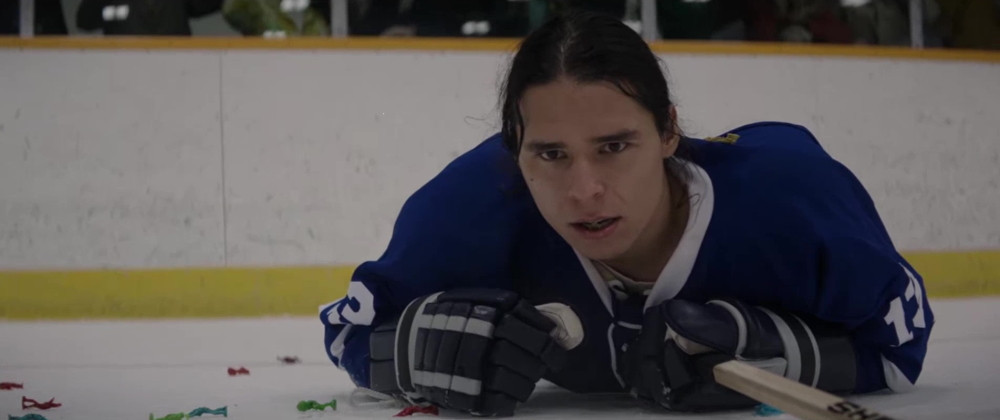
Montreal-born Stephen S. Campanelli, a graduate of the Cinema Program at Concordia University, has long established himself in Hollywood as a premiere Steadicam operator, working for decades as Clint Eastwood’s operator of choice. In 2015 Campanelli premiered his directorial debut at Fantasia, the action thriller Momentum. Other features followed, the noir thriller Grand Isle in 2019, starring Nicolas Cage, a Western TV feature Badland Wives (2019), and a coming-of-age comedy drama Drinkwater (2021). The film of interest here is the one that immediately followed Momentum, Indian Horse (2017), also a coming-of-age of sorts but with a different cultural context, dealing with an Ojibwa boy growing up in 1960s Ontario during the period of the residential schools, which were Catholic sponsored government schools initiated after the Indian Act of 1876 and administered until 1996 with the aim of “de-indigenizing” Indigenous children (or as one white character says in the film, to “have the Indian drummed out of him”). The Indian Act sanctioned taking school age children away from their families (forcibly if need be) and brought to Catholic schools where they were stripped of all vestiges of their Indigenous culture (language, clothes, spiritual belief, food). The true and horrifying extent of the harm suffered by these children and adolescents in residential schools has come to light in recent news reporting the many missing children and unmarked graves discovered on former residential school grounds across Canada in 2021.
The ill treatment of Indigenous youth in these residential schools is getting considerable exposure in recent years in a variety of films as well. It was given an insider’s view in Jeff Barnaby’s harrowing horror tinged debut Rhymes for Young Ghouls (2013) and his short found footage film Etlinisigu’niet (Bleed Down, 2015), a science-fiction allegorical twist in Night Raiders (2021, Danis Goulet), staged as a docu-drama a la Les Ordres (with dramatizations) in We Were Children (2012, Tim Wolochatiuk), given a fantastic twist in the wonderful shorts Savage (Lisa Jackson, 2009) and In the Beginning Was Water and Sky (Ryan Ward, 2018), and as a straight forward documentary in Honor to Senator Murray Sinclair (Alanis Obomsawin, 2021, 29 min.).

Rhymes for Young Ghouls
Regardless of the type of film, there is a growing set of conventions and visual iconography found across many of these films. For example, structurally it is common for a film about residential schools to have a flashback structure which begins with the residential school survivor an adult reminiscing about their experiences, and then the film cutting back to the earlier time of events, using either archival material, dramatizations or combinations of them. This structural device is important because it establishes that the residential school experience is a lingering one that has caused life-long scars and trauma. It places this trauma in the present and not something tucked away in the past.
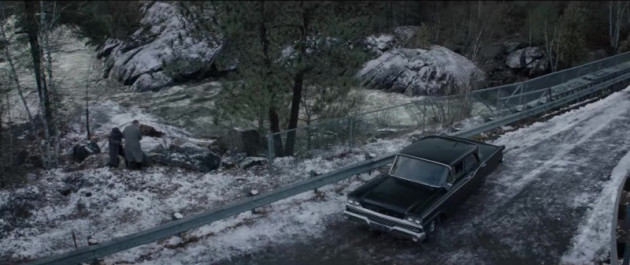
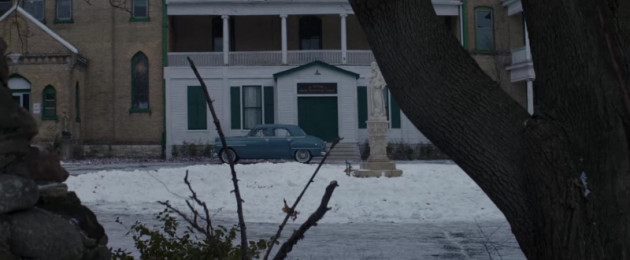
The ominous sedans
There are also many common recurring scenes, plot points and imagery in these films: a period sedan parked outside a rural home, coming to take a child away from their family; an ‘orientation’ period for incoming children (children having their hair cut, bodies brusquely doused with baking soda and scrubbed clean, Indigenous clothing removed and replaced with western style clothing); scenarios where sexual abuse is implied; a child having their tongue pierced for speaking in their Native ‘tongue’ (Jeff Barnaby made a dystopian short film expanding on this idea, File Under Miscellaneous, 2010); children being repulsed by the food they are given to eat; physical punishments for innocuous acts of perceived rebellion; solitary confinement as a form of punishment; escape attempts (or a child who escapes into the nearby wilderness, only to be found frozen dead a few days later). This latter event was the basis for an early Indigenous film produced by the NFB in 1975, Cold Journey (Martin Defalco), which was based on the true story of “Charlie Wenjack, a young Anishinaabe boy who froze to death running away from residential school in 1966” (from the NFB website description of the film).
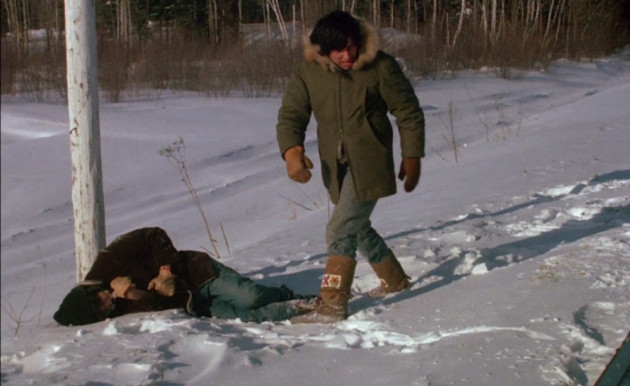
Cold Journey
Indian Horse (exec-produced by Clint Eastwood and based on the novel by Richard Wagamese, who sadly died at age 61 before the film was completed) begins in 1979, with a voice-over speaking while the camera tracks in to a group of adults sitting in a circle at a support group meeting. Saul’s (Ajuawak Kapashesit) wise VO opines, “They said I should tell my story. But you can’t understand where you’re going if you don’t understand where you’ve been,” which triggers a flashback to the beginning of his young life (1959). The setting is a lake in North Ontario and the lead character’s grandmother Naomi (Edna Manitowabi) accompanying a six year old Saul (Sladen Peltier) and his older brother Ben (Skye Pelletier) to his family’s ancestral home in the north, which she thinks will keep them safe from the white men’s searches and OUT of residential school. Saul’s brother dies of an illness which causes the parents to separate from Saul because the mother, who has bought into Christianity, wants to take Ben’s corpse “to see the priest so he can get to heaven”. Naomi continues on with Saul by canoe, but their canoe capsizes, leaving Saul and his grandmother stranded in the cold wildness. Naomi dies of cold in her sleep and Saul is rudely awakened by Government agents who carry him away to a residential school.
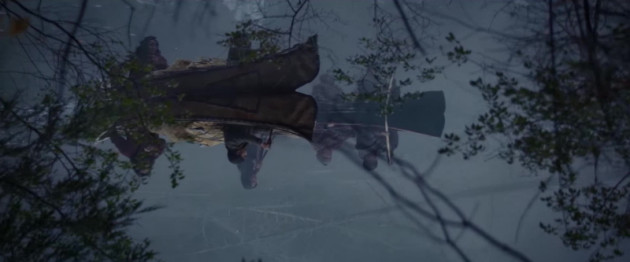
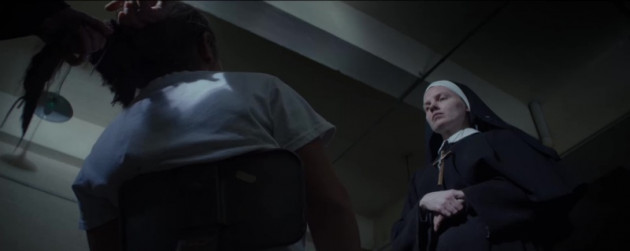
Catholic discipline meted out by Nuns
At the school the central characters are Father Quinney (Michael Murphy), the stern Sister Sara (Jill Frappier), and a kinder (at least at face value) priest, Father Gaston (Michael Huisman). Campanelli reminds us of the flashback structure with intermittent sage voice-overs by adult Saul, speaking from the perspective of experience. Gaston wants to teach and win the hearts of the students with a carrot rather than stick and oversees the construction of a hockey rink, which will play a major role in Saul’s development. While young Saul dedicates himself to hockey and adapts well to the regiment, he is not oblivious to the suffering of his less assimilated classmates: a sensitive young girl who dies in confinement as punishment for being too emotionally dependent on an older surrogate sister; the subsequent suicide attempt by the “surrogate sister” saddened by the girl’s death; the failed escape attempt of Saul’s friend Lonnie (Bradley Trudeau), which makes Saul feel guilty because he refused to join him in the escape attempt.
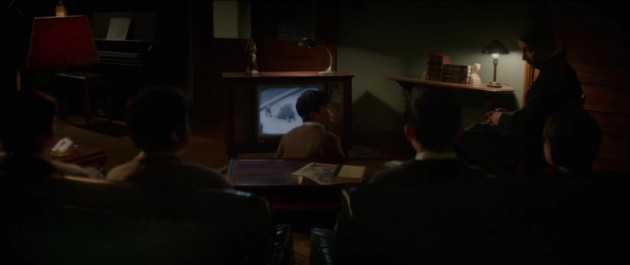
The classic Saturday Hockey Night in Canada
At the 45 minute mark the film moves forward to 1968, and Saul as a teenager (Forrest Goodluck). Saul is scouted by a coach of a local all-Indigenous hockey team called the Mooses. Father Gaston sells hockey as “God’s game” to Father Quinney, who agrees to let Saul leave the school to be raised by caring Indigenous foster parents in the mining town Manitouwadge so he can pursue a hockey career. But the journey is rough and laced with racialized violence. Like the scene at a bar where the Mooses go to celebrate a victory. A group of white men tell them that they have to fight before they can eat “like white men,” but the players are led out to the back alley one by one so they are outnumbered and easily beaten.
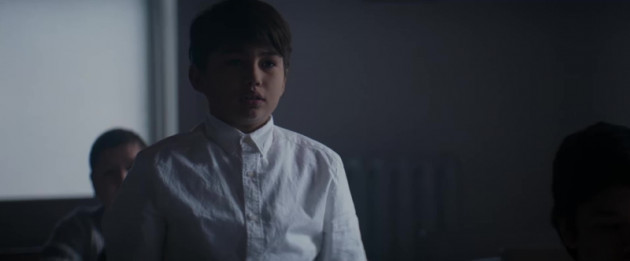
Saul Age 6
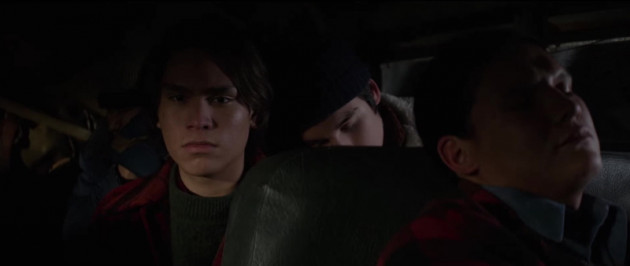
Saul as a teenager
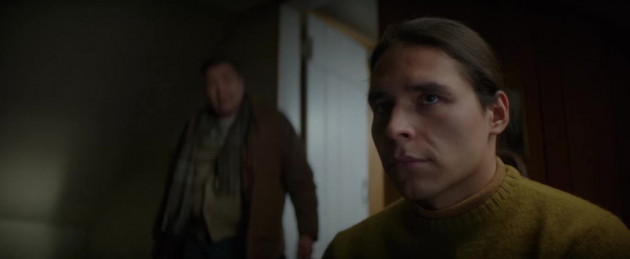
Saul as a young adult
The next phase in his career occurs when a coach from a Toronto Maple Leafs farm team, Jack Lanahan (what a great name for a coach), played Martin Donavan, offers him a semi-professional contract with the Toronto Monarchs. Saul is now played by his oldest version, Ajuawak Kapashesit, who gives the most wooden performance of the three actors. This is perhaps somewhat intentional to display the numbness required to survive all the abuse he has sustained first at the residential school then playing hockey, but it does negatively impact the emotional strength of his scenes.
The way the pain of residential schools is internalized is captured nicely in the scene where Saul says his goodbyes to his adopted brother Virgil (Will Strongheart) as Saul leaves for Toronto. Saul mentions that he did have a brother, and when he does not elaborate on what happened to him, Virgil adds that his parents also never talk about their residential school experience. They prefer to not remember the traumatic period and, most importantly, not share that pain with their offspring.
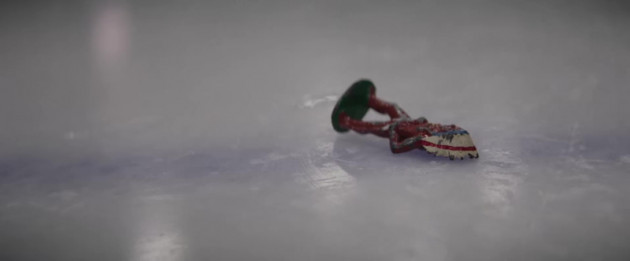
Fans show their “appreciation” by throwing plastic toys onto the ice
Campanelli parallels the scene where Saul he is introduced to his new Toronto home by the coach Jack and his wife Elissa (Carrie Schiffler) with the similar scene when he first arrives at the home of his foster parents. Only now the white middle class environment shows he is farther from his roots. When Jack shows him his room filled with Toronto Maple Leaf memorabilia and remnants of former players, Jack invokes Reggie Leach, a player of Ojibwe origins who had a highly successful hockey career in the late 1960s to the 1980s, scoring as many as 61 and 50 goals in a season. Other great hockey players with Indigenous origins are Bryan Trottier, Theo Fleury, and Carey Price. Though the level of hockey is higher, the racism remains. Fans throw Indian toy figures onto the ice, hoot out Indian war calls and even the local sports writers use racist rhetoric to describe Saul’s first game, “Bright eyed like a painted warrior, bearing down on a wagon train, in a tussle he took a player’s scalp.”
Although this isn’t a sports movie, hockey does play a sizeable role in Saul’s life and hence the film does feature quite a few game scenes. What often sinks a sports movie is the lack of believability in how the sport looks and feels when it is played. Although a hockey fan will notice that the three actors do not move on the ice as a professional does, they are convincing enough to sell that they can play. And as importantly, Campanelli does a very good job of representing that period of hockey, the 1960s and 1970s, with the minimalist hockey rinks (no advertising on the boards), the limited equipment, the slower speed of the game, etc..
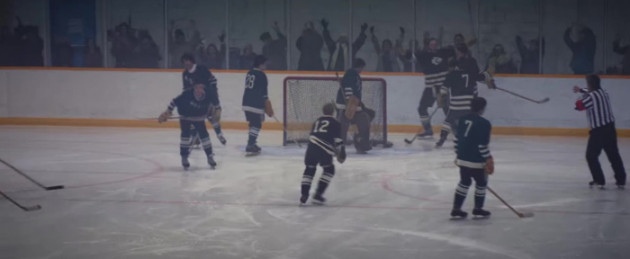
And Campanelli does Canada (and the province of Prince Edward Island) proud when he plays the Canuck classic by Stompin’ Tom Connors “Sudbury Saturday Night” during a hockey game, at around the 57 minute mark (if your not from the Maritimes, look him up).
One part of the film’s tragedy is how Saul Indian Horse is not able to fully exploit his genuine skills as a hockey player which in more ideal situation could have led to a professional career as a hockey player. The pressures of anti-Indigenous racism Saul experiences at every level he played at and the resulting substance abuse and lack of self esteem is behind the story’s “what if” scenario with regards how far his talents could have taken him.
Once in Toronto Saul sees first hand the hardships faced by many Indigenous people living in urban environments without the support of family and friends. In one scene Saul walks along downtown Toronto and is saddened (or shocked?) when he sees a street lined with homeless Indigenous men. In the same scene we get a nice easter egg when we see on a movie marquee From a Whisper to a Scream, which is a student film Campanelli made in the early 1980s which I remember seeing at the school’s Year End Screening with fond memories.
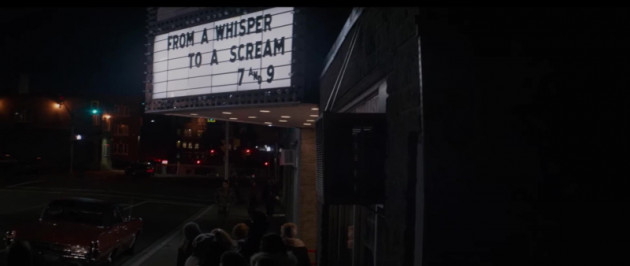
One of the film’s most emotionally complex scenes comes at 75 minutes when Saul is surprised by a visit from Father Gaston who comes to tell him that he has been following his growth as a player and how proud he is of his accomplishments. He also informs him he is being sent away by the Church to teach in Africa –which for anyone aware of how the Church sometimes revolves its internal issues, is code for a form of punishment for having done something wrong, usually of a sexual nature. The meeting between Father Gaston and a surprised Saul takes place in a corridor at a hockey arena. The scene is dimly lit, giving the mood a quasi-sinister tone. Father Gaston walks out of darkness. He is standing on a step which places him in a physically dominant position, with Saul looking up at him. Saul says little to his former teacher. The priest admits to him as if trying to admonish his guilt, “The school, what was happening there…..was wrong”. Father Gaston then hugs Saul, but the gesture of apparent forgiveness is punctuated by a loud stinger sound and a match flashback cut to Father Gaston embracing a younger Saul in the same way, and then a fast montage of other disquieting moments from Saul’s school days. Father Gaston leaves with a line which he has said before, “You are glory Saul,” which carries a powerful ambivalence. The fact that Saul does not reciprocate the physical contact and his blank reaction suggests something more sinister at the school. And this is confirmed in a later flashback.
The weight of his recent past in residential school coupled with the constant pressures of racism come to a head in a single game where he attacks a player who was chipping and chiding him all game long. After the game his coach implores him to not allow himself to be provoked by racist name calling that he refers to as “stupid trash talk”, and think about making it to the “show” (the NHL). Saul realizes that the coach will never understand things from his perspective and all the pressure proves too much for Saul, who decides to quit the team and along with it any chance for making it to the NHL. The story flashes ahead to 1979, with Saul back working a series of menial jobs, drinking, and spotting his friend Lonnie drunk and homeless. Unlike Lonnie, Saul managed to escape the residential school system, but ends up at the same place as Lonnie. It is 1989, and Saul is brought into a hospital where a doctor warns him that if he continues to abuse his body as he has, death will soon follow. The doctor gives him the address to a recovery home called Rising Dawn, which takes us to where the film began.
The counselor gives advice that resonates with Saul: “Have you ever wept Saul? You know, you have to find a place where you can. Here with us or on your own. But you need to find it. Your silence is killing you.” These words trigger Saul to confront his past in the most literal sense: in the next scene he visits the now abandoned and boarded up St. Jerome’s Indian Residential School he attended as a young boy. The ‘ghostly’ nature of the boarded up building evokes the notion of Saul visiting the “ghosts of his past.”
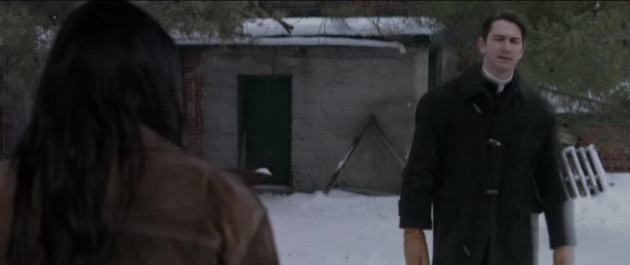
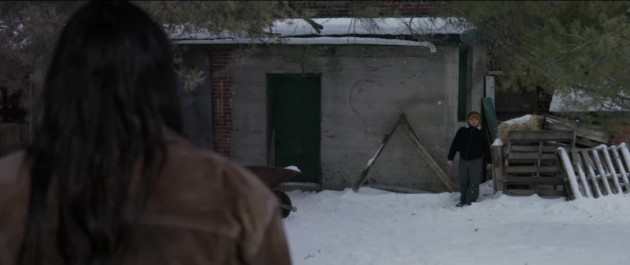
Confronting the ghosts of his past
As Saul walks around the school revisiting familiar haunts and we see flashback snippets of those events (as in Ingmar Bergman’s Wild Strawberries or Woody Allen’s Annie Hall), Campanelli treats the scene stylistically like a ghost story, with low key lighting, ominous sounds, low and canted angles, and cob-webbed sets. Saul’s VO confirms the source of the style: “Sometimes ghost hover. They linger in the darkest corners.” Then we get the scene we’ve been dreading. What the film has been vaguely hinting at but too afraid to state: Saul from 1989 ‘seeing’ his younger self being led by Father Gaston to a secluded spot behind a fence and forcing Saul to his knees to sexually satisfy him. That once ambivalent line, now assuming its full salacious horror, “You are glory Saul.” When I first saw the film this scene felt contrived and staged for its blunt impact, largely because I felt the sexual abuse between Father Gaston and Saul was not suggested or hinted enough in their earlier scenes. But seeing it a second time, I feel differently and the subtle sexual clues feel more palpable and at the right register. Making them any more overt would have robbed the later scene of its creeping sense of horror.
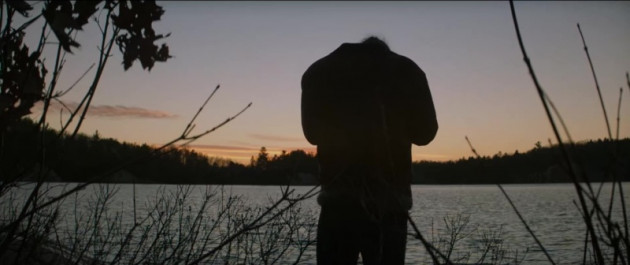
Campanelli (and of course the author of the novel, Richard Wagamese) understands the importance of tradition and ancestral roots for the Ojibwe People by having Saul end his trip back where he last saw his grandmother, brother and parents, the lake area from the opening scene. Echoing the previous scene where he revisited the ‘evil’ ghosts of his past, he fantasizes seeing his family, only now these are ghosts that heal, expressed in a touching shot from behind as Saul finally learns “to weep.” The film ends on a positive note. Saul recounts the advice of his great grandfather, “A thunder will crash through our hearts and minds. And we must learn to ride the horses of change. It is what the future asks of us. Our survival depends on it.” By now Saul has returned to where he felt the most support and comfort, Manitouwadge, where he reunites with his adopted foster parents, brother and friends. The camera absorbs this touching moment from up high and far, as it cranes up to capture the snow covered and decidedly non-picturesque mining town. But the final crane up to the sky suggests that this is where he belongs and where he will be able to heal himself. The film concludes with a series of title cards that give historical information on residential schools and the historical aftermath, with voice-over testimonies from residential school survivors. The final one runs over the film’s Title Card, beginning with the voice of six year old Saul, “My name is Saul Indian Horse,” giving way to an older Saul’s voice, “And this is my story.” The credits then continue over archival photographs accompanied by a beautiful Indigenous song (original music by Jesse Zubot).
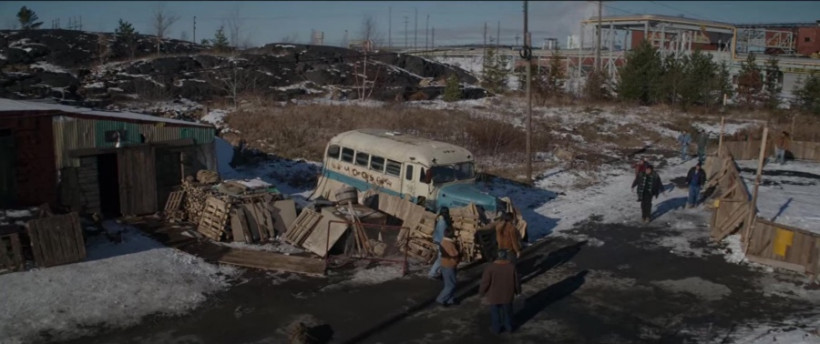
For more information on residential schools in Canada:



